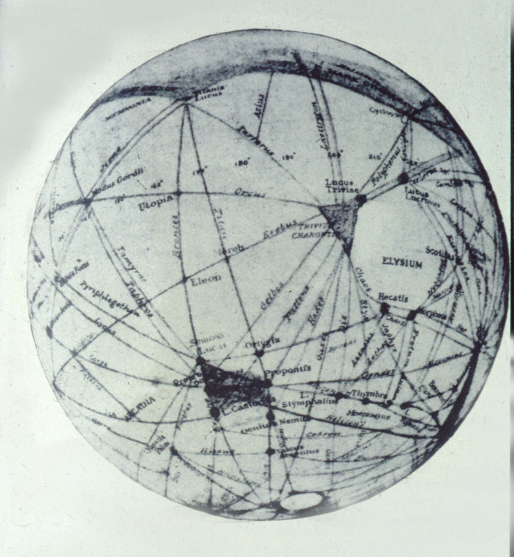Here's a news flash: scientists can be wrong.
That's no big deal (unless the scientist is you), since research is self-correcting. Consequently, most errors by scientists become historical curiosities, with little long-term importance.
But some research flubs can have a silver lining. Exhibit A: the famous canals on Mars.
The century-old claims that our little ruddy buddy was veined with a network of waterways turned out to be false. Today, we know that the actual martian landscape is a cratered, howling wasteland. But this false premise demonstrated something important - something that people have forgotten; namely, that the public won't go nuts if we find intelligent life in space.
The canals were first described by Italian astronomers in the salad days of the Victorian Era. Decades later, they developed widespread notoriety thanks to the American astronomer, Percival Lowell. Lowell not only spent a lot of nights mapping these putative channels from his observatory in Flagstaff, Arizona, but penned three books describing both his observations and his musings on the motivations of the Martians. Indeed, his writings were so popular, they were serialized in magazines.

A depiction of the Martian 'canals' Percival Lowell.
Lowell - astute and ferociously talented - was fooled by the mechanics of sight. Our retinas and brains have been wired by a hundred million years of evolution to find outlines in a visually complex landscape. This helps us to recognize prey and predators. Consequently, we have a built-in tendency to "connect the dots," a fact that should have registered with Lowell. After all, his "canals" extended in straight lines for thousands of miles, with nary a detour to accommodate difficult topography. By contrast, even the Suez Canal, which is considerably shorter and cuts across an easy, level landscape, has several bends.
An interesting digression, and one that few of your friends will know, is that Lowell also claimed to see linear features on Venus, shadowy striations in a spoke-like pattern. This has been attributed to Lowell's efforts to limit the apparent brightness of the planet by modifying the optics of his telescope. Apparently, he may have merely been mapping the blood vessels in his eye (a conjecture kindly brought to my attention by Sacramento City College astronomer Liam McDaid).
Lowell took his mistaken notions of canal-crazed neighbors to the grave. But for several decades straddling the start of the 20th century, his ideas were not only prevalent but widely believed. And what was the public reaction to the discovery that an advanced, technically competent civilization was camped out a mere 35 million miles from Earth?
Mostly, a collective yawn.
You might have expected something more. Perhaps a bit of panic, or at least a modicum of paranoia. The placid response strongly suggests that, if we find intelligent life beyond Earth, the public isn't going to suddenly careen out of control.
True, there was some mild discombobulation in 1938, when Orson Welles broadcast his famous Mercury Theater radio dramatization of "War of the Worlds," a story written four decades earlier when the canals were page one. But that broadcast is a faulty analog to the discovery of aliens in deep space - Welles' dramatized extraterrestrials were landed in New Jersey, busy turning the Garden State into a rubble field. No one (other than New Yorkers) doubts that such an effort would get your attention.
But here's the lesson - and one that's worth heeding. There are people who think that the detection of a message from space would be covered up by a government fearful of civil unrest. Well, that theory was put to the test a century ago. And it failed.
If we find the aliens, mark my words: You'll know.